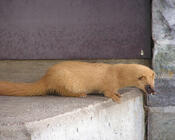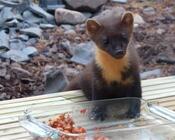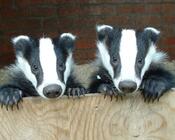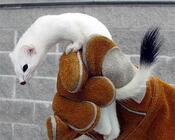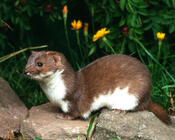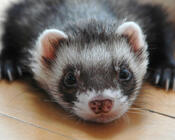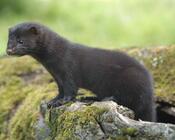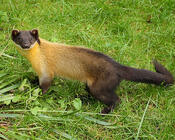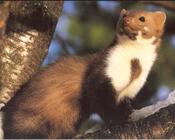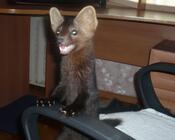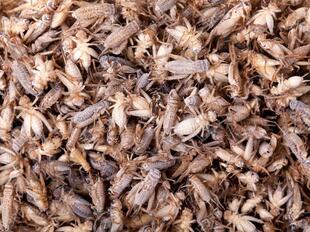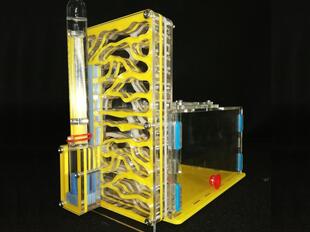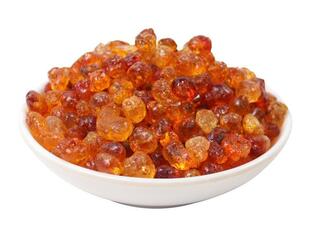Appearance
Adult mustelids range in size from 114 mm and 25 g (Least weasel) to over 1 m and 45 kg (Sea otters). These animals are generally long-bodied with short legs. Most species have slender bodies, but some, like badgers (Mustelinae, Mustelinae) and wolverines have much broader bodies. The skull is elongate with a relatively short rostrum. Adult males are generally about 25 percent larger than females of the same species. The ears are short, as are the legs, each of which bears five digits. The claws do not retract and, in digging species, are especially robust. The canines are long, and the carnassials are well-developed. The upper molars are often narrow in the middle, giving them an hourglass shape. Mustelids have a powerful bite; in many species, the large postglenoid process locks the lower jaw into the upper, causing the lower jaw to only move in the vertical plane, without any rotary motion.
Distribution
Members of the family Mustelidae inhabit all continents except Antarctica and Australia. They do not occur on Madagascar or oceanic islands, but have been introduced to New Zealand.
Diet
Mustelids are primarily carnivorous, but some species may at times eat plant material. A wide range of animal taxa are preyed upon by various members of this family; many mustelids are opportunistic feeders rather than specialists. However, many mustelids are especially adept at capturing small, mammalian prey. Weasels, for example, are capable of chasing and capturing rodents in their burrows. Otters are well-adapted to chasing and capturing aquatic prey, including fish, crustaceans, and other aquatic invertebrates. Mustelids hunt in a variety of terrestrial, aquatic, and arboreal habitats. Some species regularly prey on animals larger than themselves. Some species have been known to store food.
In wild
Members of the family Mustelidae are either diurnal or nocturnal. Many of the long, narrow-bodied species are quick and agile, and move in a bounding, scampering fashion. The broader-bodied forms have a more lumbering gait. Some species are adept climbers, while others are excellent swimmers. Many species spend a great deal of time on the ground, searching for food in crevices, burrows, or under cover. Manyspeciesshelterinburrows.
Social behavior varies both within and among species, and may vary in relation to local environmental conditions such as food availability. For example, European badgers are known to form groups with several males and females that are all reproductively active within the group. Yet in other parts of their range, European badgers may live solitarily or in pairs.
Mating systems vary both within and among species. Many species are polygynous and/or promiscuous. Some species are social, while others are solitary. Social organization can vary within species as well. Most mustelids breed seasonally, but the length of the reproductive period varies among species. Day length often dictates the onset of the breeding season, which usually lasts 3 to 4 months. Many mustelids undergo delayed implantation, with the fertilized embryo taking up to 10 months (e.g. Melesmeles) to implant in the uterus in some species. Environmental conditions such as temperature and day length determine when implantation occurs. Mustelids that live in more seasonal climates are more likely to exhibit delayed implantation. Following implantation, gestation typically lasts 30 to 65 days.
Females give birth to a single litter each season, the size of which varies within and among species. For example, sables have an average litter size of 2.2, but can give birth to anywhere from 1 to 7 pups. The mountain weasel averages 8.7 pups per litter, but can have between 3 and 14 young in a single bout of reproduction. Generally, mustelids are altricial, being born small and blind. They reach sexual maturity between 8 months and two years following birth.
Mustelids typically live between 5 and 20 years in the wild.
 Russian
Russian
 English
English
















